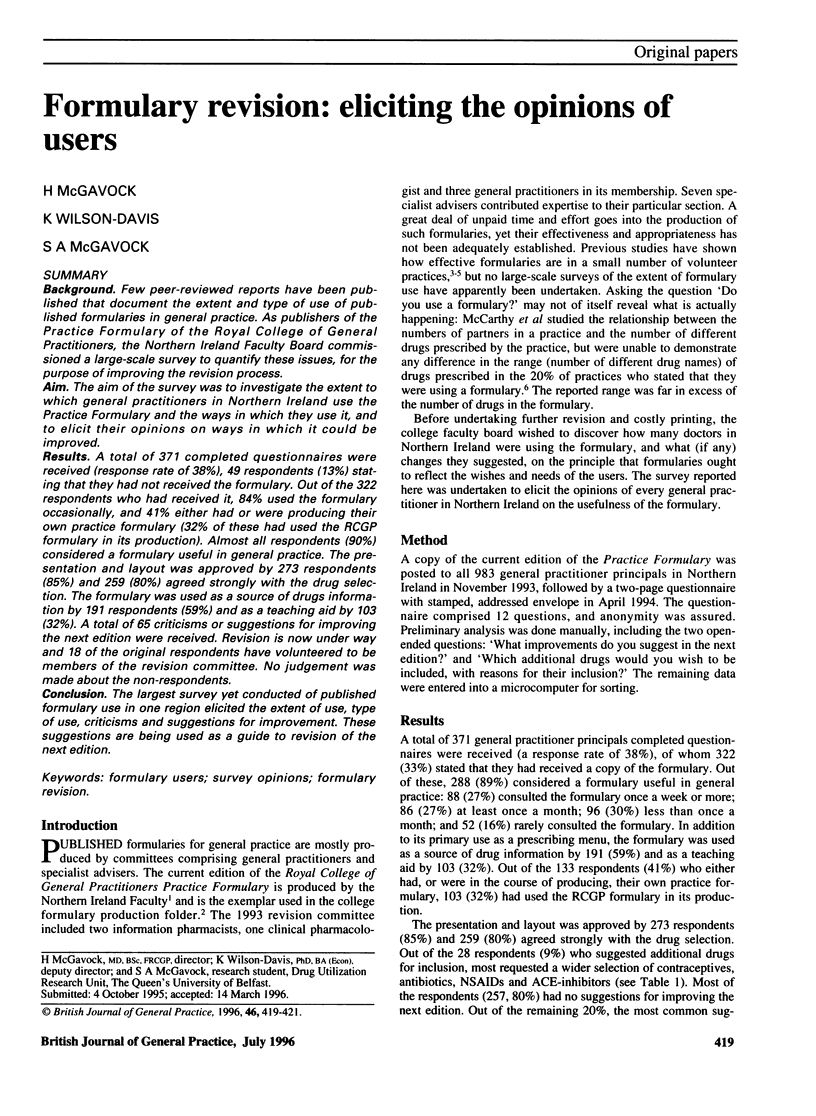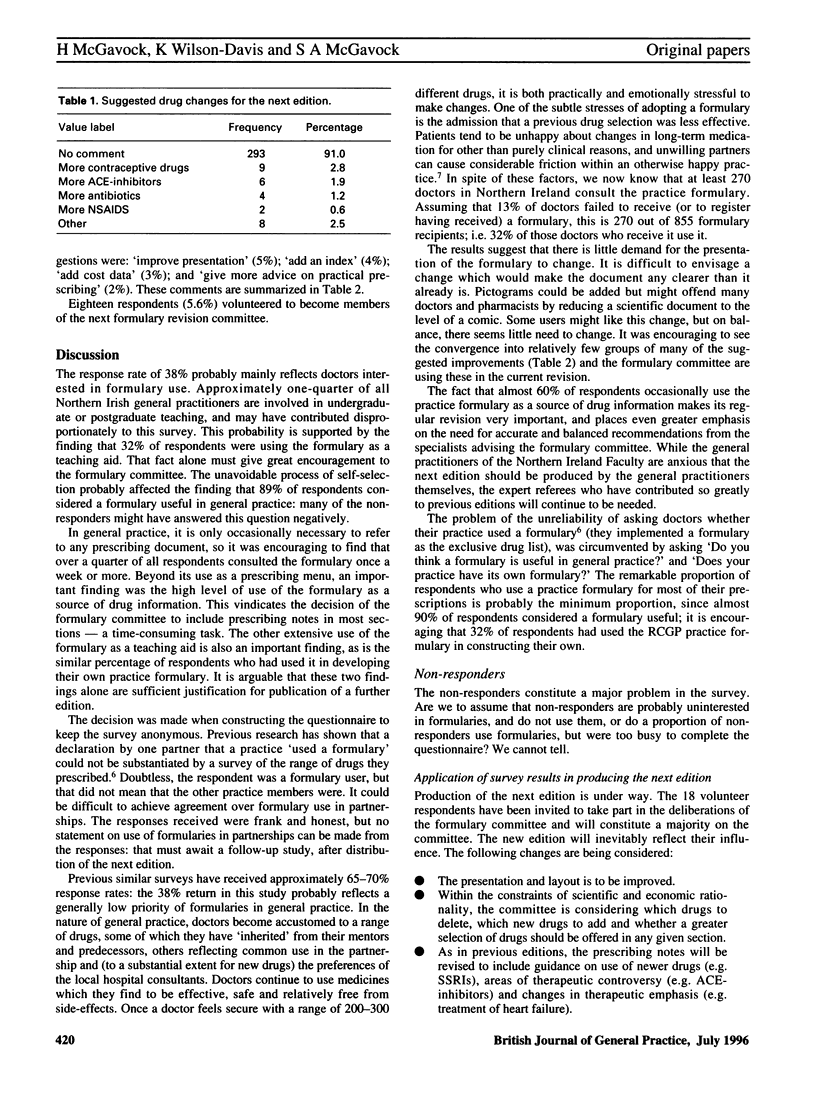Abstract
BACKGROUND: Few peer-reviewed reports have been published that document the extent and type of use of published formularies in general practice. As publishers of the Practice Formulary of the Royal College of General Practitioners, the Northern Ireland Faculty Board commissioned a large-scale survey to quantify these issues, for the purpose of improving the revision process. AIM: The aim of the survey was to investigate the extent to which general practitioners in Northern Ireland use the Practice Formulary and the ways in which they use it, and to elicit their opinions on ways in which it could be improved. RESULTS: A total of 371 completed questionnaires were received (response rate of 38%), 49 respondents (13%) stating that they had not received the formulary. Out of the 322 respondents who had received it, 84% used the formulary occasionally, and 41% either had or were producing their own practice formulary (32% of these had used the RCGP formulary in its production). Almost all respondents (90%) considered a formulary useful in general practice. The presentation and layout was approved by 273 respondents (85%) and 259 (80%) agreed strongly with the drug selection. The formulary was used as a source of drugs information by 191 respondents (59%) and as a teaching aid by 103 (32%). A total of 65 criticisms or suggestions for improving the next edition were received. Revision is now under way and 18 of the original respondents have volunteered to be members of the revision committee. No judgement was made about the non-respondents. CONCLUSION: The largest survey yet conducted of published formulary use in one region elicited the extent of use, type of use, criticisms and suggestions for improvement. These suggestions are being used as a guide to revision of the next edition.
Full text
PDF


Selected References
These references are in PubMed. This may not be the complete list of references from this article.
- Dowell J. S., Snadden D., Dunbar J. A. Changing to generic formulary: how one fundholding practice reduced prescribing costs. BMJ. 1995 Feb 25;310(6978):505–508. doi: 10.1136/bmj.310.6978.505. [DOI] [PMC free article] [PubMed] [Google Scholar]
- Harding J. M., Modell M., Freudenberg S., MacGregor R., Rea J. N., Steen C. A., Wojciechowski M., Yudkin G. D. Prescribing: the power to set limits. Br Med J (Clin Res Ed) 1985 Feb 9;290(6466):450–453. doi: 10.1136/bmj.290.6466.450. [DOI] [PMC free article] [PubMed] [Google Scholar]
- McCarthy M., Wilson-Davis K., McGavock H. Relationship between the number of partners in a general practice and the number of different drugs prescribed by that practice. Br J Gen Pract. 1992 Jan;42(354):10–12. [PMC free article] [PubMed] [Google Scholar]
- McGavock H., Webb C. H., Johnston G. D., Milligan E. Market penetration of new drugs in one United Kingdom region: implications for general practitioners and administrators. BMJ. 1993 Oct 30;307(6912):1118–1120. doi: 10.1136/bmj.307.6912.1118. [DOI] [PMC free article] [PubMed] [Google Scholar]
- Needham A., Brown M., Freeborn S. Introduction and audit of a general practice antibiotic formulary. J R Coll Gen Pract. 1988 Apr;38(309):166–167. [PMC free article] [PubMed] [Google Scholar]
- Wyatt T. D., Reilly P. M., Morrow N. C., Passmore C. M. Short-lived effects of a formulary on anti-infective prescribing--the need for continuing peer review? Fam Pract. 1992 Dec;9(4):461–465. doi: 10.1093/fampra/9.4.461. [DOI] [PubMed] [Google Scholar]


